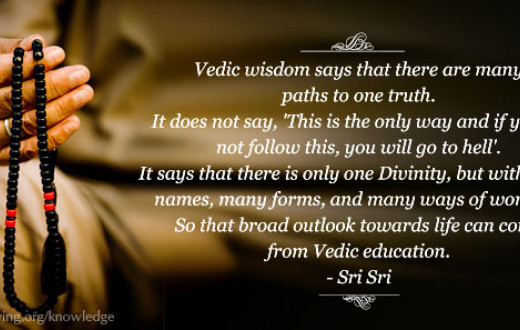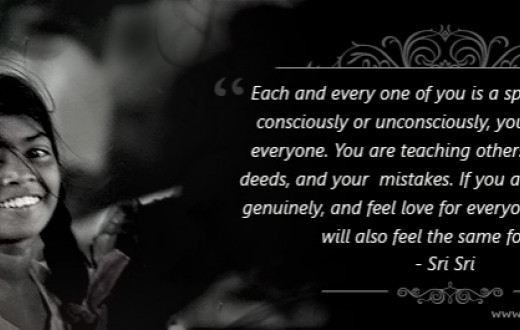9 Oct 2010
Thefestival of Navratri is celebrated with prayers and gaiety in the beginning ofthe Ashwin (autumn) and thebeginning of Chatira (spring). Thisperiod is a time for self-referral and getting back to the Source. During thistime of transformation, nature sheds the old and gets rejuvenated; animalshibernate and life emerges back afresh in the spring.
Though the microcosm isvery well within the macrocosm, it’s perceived separateness is the cause ofconflict. For a gyani (wise), theentire creation becomes alive and he recognizes life in everything in the sameway children see life in everything. The Mother Divine or the Pure Consciousnessitself pervades all the forms and has all the names. Recognizing the one Divinityin every form and every name is the celebration of Navratri. Hence, specialpujas honoring all aspects of life and nature are performed during the lastthree days.
Accordingto Vedic sciences, matter reverts to its original form to recreate itself againand again. The creation is cyclical, not linear; everything is recycled bynature - a continuous process of rejuvenation. The human mind, however, lagsbehind in this routine cycle of creation. Navratri is a festival for one totake the mind back to its Source.
TheMother Divine is recognized not just as the brilliance of intellect (buddhi), but also the confusion (bhranti); she is not just abundance (lakshmi), she is also hunger (shudha) and thirst (trishna). Realizing this aspect of the Mother Divine in the entirecreation, leads one to a deep state of Samadhi. This gives an answer to theage-old theological struggle of the Occident. Through wisdom, devotion and nishkama karma, one can attain advaita siddhi or perfection in thenon-dual consciousness.
Kaliis the most horrific manifestation of Nature. Nature symbolizes beauty, yet ithas a horrific form. Acknowledging the duality brings a total acceptance in themind and puts the mind at ease.
ThoughNavratri is celebrated as the victory of good over evil, the actual fight isnot between good and evil. From the Vedantic point of view, the victory is ofthe absolute reality over the apparent duality. In the words of Ashtavakra, itis the poor wave which tries to keep its identity separate from the ocean, butto no avail.
Thethree primordial gunas are consideredas the feminine force of our magnificent universe. By worshiping the Mother Divineduring Navratri, we harmonize the three gunasand elevate sattva in the atmosphere.
Theinward journey nullifies our negative karmas. Navratri is a celebration of thespirit or prana which alone candestroy mahishasura (inertia), shumbha-nishumbha (pride and shame) and madhu-kaitabh (extreme forms of cravingand aversion). They are completely opposites, yet complementary. Inertia,deeply ingrained negativities and obsessions (raktabeejasura), unreasonable logics (chanda-munda) and blurred vision (dhoomralochan) can be overcome only by raising the level of prana and shakti, the life-force energy.
Theseeker gets back to the true Source through fasting, prayer, silence andmeditation. Night is also called ratribecause it brings rejuvenation. It gives relief at the three levels of ourexistence – physical, subtle and causal. While fasting detoxifies the body,silence purifies the speech and brings rest to the chattering mind, andmeditation takes one deep into one's own being.
Thenine days of Navratri are also an opportunity to rejoice in the threeprimordial qualities that make up the universe. Though our life is governed bythe three gunas, we seldom recognizeand reflect on them. The first three days of Navratri are attributed to tamo guna, the next three days to rajo guna and the last three days to sattva guna. Our consciousness sailsthrough the tamo and rajo gunas and blossoms in the sattva guna of the last three days.Whenever sattva dominates in life,victory follows. The essence of this knowledge is honored by celebrating thetenth day as Vijaydashmi.
Though the microcosm isvery well within the macrocosm, it’s perceived separateness is the cause ofconflict. For a gyani (wise), theentire creation becomes alive and he recognizes life in everything in the sameway children see life in everything. The Mother Divine or the Pure Consciousnessitself pervades all the forms and has all the names. Recognizing the one Divinityin every form and every name is the celebration of Navratri. Hence, specialpujas honoring all aspects of life and nature are performed during the lastthree days.














































